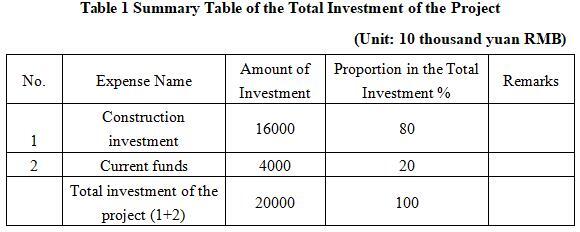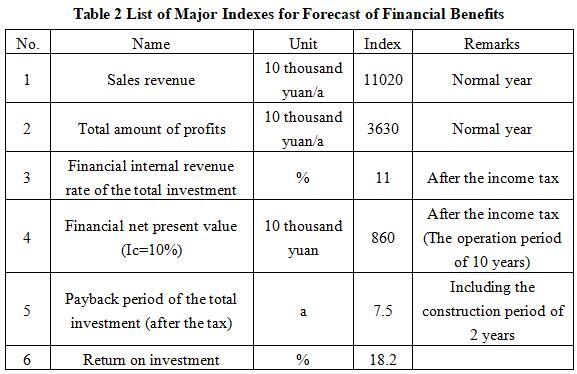New Material
Copper Foil Processing Project of Yanbian Prefecture
1. Introduction to the Project
1.1 Project background
1.1.1 Project introduction
Copper foil (also known as electronic copper foil) is a kind of cathodotic electrolytic material, which is the basic raw material of the electronic information industry, mainly used in the manufacture of printed circuit boards, power batteries, energy storage batteries, consumer batteries and other products. According to the difference in processing methods, it can be divided into two categories: electrolytic copper foil and rolled copper foil.
1.1.2 Market prospect
(1) Condition of Copper foil classification and industrial chain
According to the production method, copper foil can be divided into two categories: rolled copper foil (RA copper foil) and electrolytic copper foil (ED copper foil). Among them, rolled copper foil has good ductility and other characteristics, and is the copper foil used in the early flexible board manufacturing process; Electrolytic copper foil has the advantage of lower manufacturing cost than rolled copper foil.
In the copper foil industry chain, the upstream is copper mining and smelting, and the main raw materials include scrap copper, copper concentrate, which is made into blister copper through a series of processes; The midstream is various types of copper foil, mainly including electrolytic copper foil, rolled copper foil, etc., of which electrolytic copper foil includes lithium battery copper foil and electronic circuit copper foil; Calendered copper foil includes flexible copper clad laminates and carrier tapes; The downstream application fields are mainly consumer electronics, computers and related equipment, automotive electronics, communication equipment and other industries.
The upstream copper mining enterprises in the copper foil industry mainly include Western Resources, Western Mining and Xizang Mineral, and the main copper smelting enterprises are Jiangxi Copper, Tongling Nonferrous Metals, Yunnan Copper, Gansu Jinchuan, Daye Nonferrous Metals Company and other large-scale copper smelting enterprises; The midstream is the production and processing of copper foil, and the representative enterprises include Jiayuan Technology, Nuode New Materials, etc.; The downstream is lithium battery, copper clad laminate, flexible circuit board and other industries.
(2) Analysis of copper foil market demand and industry trends
The global copper foil market size was 7.323 US dollars billion in 2023 and is expected to expand at a CAGR of 7.75% to 12.349 billion US dollars in 2030. The growing demand for electronic devices such as laptops, tablets, and mobile phones is the major factor driving the growth of the market. The demand for copper foil in developing countries is expected to grow rapidly due to rising disposable income, low-cost internet usage plans, and various digitalization initiatives by various governments around the world.
The growing adoption of electric vehicles(EV)in the United States, Germany, and the United Kingdom is expected to drive the consumption of copper foil. Carbon emission regulations, along with increasing environmental awareness, will further drive the demand for electric vehicles (EVs). As environmental concerns are getting worse, consumers are choosing electric vehicles because they have zero carbon emissions. Electric vehicles use lithium-ion batteries as a power source because of their high energy density and low self-charging rate. According to the International Energy Agency (IEA), countries such as the United States, China, and Japan are experiencing a surge in demand for electric vehicles at an unprecedented rate. Favorable policies and regulations in various countries, including zero-emission and fuel economy standards, will stimulate the demand for electric vehicles in the near future, thereby increasing the consumption of these foils. In addition, automakers such as Renault and MG have launched hybrid vehicles in developing countries, which is expected to further increase demand.
Moreover, the exponential growth of the population and the increase in disposable income are driving the demand for electronic products such as smartphones, laptops, electronic security devices, and guidance and control systems. With the rise of digitalization, online education platforms, and the Internet of Things (IoT), the demand for electronics is expected to grow during the forecast period, thereby promoting the market growth. At the same time, copper foil is becoming increasingly popular in the healthcare industry, especially for diagnostic equipment. Copper's high electrical conductivity makes it the best material for medical devices to achieve correct readings and reliable outputs. Copper has built-in antimicrobial properties, making it ideal for devices that need to reduce the risk of infection.
In the electronic information industry, copper foil is mainly used for copper clad laminates and printed circuit boards. With the development of 5G, Internet of Things, big data and other technologies, the requirements for high performance, high density and high reliability continue to increase, which promotes the continuous growth of the copper foil market. In the new energy industry, the rise of new energy vehicles is an important driving force for the growth of copper foil demand, especially the demand for copper foil in lithium batteries has increased significantly.
Industry Trends:
Capacity clearance: With the gradual clearing of low-end production capacity, the industry will concentrate on the leading enterprises, and enterprises with a high proportion of high-end products, high utilization rate and better cost control will have more competitive advantages.
Technological advancements: The copper foil production equipment has been continuously upgraded to improve production efficiency and product quality. Improvements in the surface treatment process can also significantly improve the performance and service life of copper foils.
Growing market demand: With the vigorous development of the electronic information industry and the new energy industry, the demand for copper foil will continue to grow, especially the demand for copper foil for high-performance electronic circuits and copper foil for lithium batteries is growing rapidly.
To sum up, while facing challenges, the copper foil industry has also ushered in new development opportunities, and the market prospects are optimistic through technological progress and market demand growth.
Hunchun Zijin Copper has an annual output of 20,000 tons of copper, and this project can cooperate with Hunchun Zijin Copper, which has three major advantages: First, the logistics cost is low; Second, there is a reliable guarantee for copper raw materials; Third, it can effectively reduce the risk of raw material price fluctuations.
1.1.3 Technical analysis
The processing process of copper foil mainly includes the following steps:
Raw material preparation: The main raw material for copper foil is high-purity electrolytic copper, which is usually extracted from natural copper ore or waste electrical appliances through an electrolytic refining process. Raw materials need to be crushed, sieved and cleaned to remove impurities and control the content of ingredients. The cleaned copper powder is then mixed with a certain proportion of additives to form a homogeneous mixture.
Smelting and refining: The mixture is fed into an electrolytic cell for electrolytic smelting, and copper ions are oxidized to ions at the anode and reduced to pure copper at the cathode by a direct current. In the process, it is necessary to control process parameters and add chemicals to remove harmful impurities, such as lead, antimony, nickel, etc., and after multiple times of smelting and refining, high-purity electrolytic copper is obtained.
Rolling processing: The electrolytic copper blank is heated to an appropriate temperature and cast into a continuous copper plate by continuous casting or casting. The continuous copper plate is then rolled and annealed several times to gradually reduce the thickness to form the copper foil of the desired thickness. During the rolling process, parameters such as rolling speed, temperature and roll pressure need to be controlled to ensure product quality.
Surface treatment: Surface treatment of the produced copper foil, including roughening layers, barrier layers, and anti-oxidation coatings. The coarsening layer is used to maintain the dendritic crystalline structure composed of copper and copper oxide, the barrier layer is used to prevent substrate contamination such as particle migration, and the anti-oxidation coating is used to prevent oxidation of copper foil during handling, storage, or lamination.
Packing Inspection: Quality inspection of the produced copper foil, including visual inspection, dimensional measurement, chemical composition analysis and mechanical property testing. After the qualified copper foil is cut, cleaned and packaged, it can be sold out of the factory.
1.1.4 Advantageous conditions of project construction
(1) Policy advantages
In 2022, the Ministry of Industry and Information Technology (MIIT) issued the Notice of the Ministry of Industry and Information Technology and the National Development and Reform Commission and the Ministry of Ecology and Environment on Printing and Distributing the Implementation Plan for Carbon Peaking in the Industrial Sector, which proposes to prevent the blind expansion of copper, lead, zinc, alumina and other smelting capacity, new construction, reconstruction and expansion of smelting projects must meet the conditions of industry norms and meet the advanced value of energy consumption quota standards.
(2) Location advantages
Hunchun City is located in the lower reaches of the Tumen River, bounded by a watershed in the southeast, and borders Russia; It starts from the main peak of Mopan Mountain in the northwest to the middle point of Tumen River, and it is connected with Tumen City; it starts from the Mopan Mountain in the northwest and is bounded by the watershed of the peaks of the Laoyeling Mountains, and is connected with Wangqing County and Dongning County of Heilongjiang Province. Hunchun City is 180 kilometers away from Vladivostok in Russia, 46 kilometers away from Kraskino, a major town in Russia, 93 kilometers away from Najin Port in North Korea, and 171 kilometers away from Cheongjin Port in North Korea. Hunchun, whcih is located at the heart of the international cooperation and development of the Tumen River region, is also known as the “Golden Triangle of Northeast Asia”.
(3) Advantages of investment services
Hunchun City strives to create the best investment service environment, and has formulated a new project coordination service scheduling meeting system; The first question responsibility system; Time-limited closing system; Staff operational service system. It has established a system of “one window for external affairs, one-stop examination and approval, and one-stop service”, and implemented the whole process of approval and certification for investment projects, providing meticulous and thoughtful services for entrepreneurs to invest and start businesses. At the same time, it has built a bank-enterprise docking platform, and pioneered the “inventory mortgage” and “intellectual property pledge” loan business in the prefecture.
(4) Industrial advantages
Hunchun Copper Mine is very rich in mineral resources, mainly including gold, copper, silver, lead, zinc and other metal minerals. Among them, copper ore is the main product of Hunchun copper mine, and its quality is excellent and well received by the market. Hunchun Copper Mine, with abundant copper reserves and high grade, has become an important force in the domestic copper industry.
1.2 Contents and scale of project construction
With an area of 40,000 square meters, the project is planned to mainly build copper foil production workshops, laboratories, finished product warehouses, etc.
1.3. Total investment of the project and capital raising
The total investment of the project is 200 million yuan, including construction investment of 160 million yuan

1.4 Financial analysis and social evaluation
1.4.1 Main financial indexes
After the project reaches the production capacity, its annual sales income will be 110.2 million yuan, its profit will be 36.3 million yuan, its investment payback period will be 7.5 years (after the tax, including the construction period of 2 years) and its investment profit rate will be 18.2%.

Note: “10 thousand yuan” in the table is in RMB.
1.4.2 Social evaluation
Hunchun City is located in the Changchun-Jilin-Tumen (Hunchun) Border Economic Cooperation Demonstration Zone, which has unique geographical advantages. In addition, Hunchun also enjoys generous policy support, attracting a large number of major projects, such as Zijin polymetallic complex gold concentrate comprehensive recovery project, Xingyang seafood processing project, etc., which can not only promote Hunchun's economic construction, but also drive employment and local development, and the project construction has good economic and social benefits.
1.5 Cooperative way
Sole proprietorship, joint venture and cooperation, etc.
1.6 What to be invested by the foreign party
Funds and other ways can be negotiated face to face.
1.7 Construction site of the project
Hunchun City
1.8 Progress of the project
Project proposal has been prepared
2. Introduction to the Partner
2.1 Unit basic information
Name: Hunchun City Prefecture Bureau of Commerce
Address: No. 1066 Longyuan East Street, Hunchun City
2.2 Unit overview
Hunchun City is located in the southeast of Jilin Province in the lower reaches of the Tumen River, covering an area of 5,134 square kilometers, inhabited by Han, Korean, Manchu, Hui, Mongolian and other ethnic groups. The city is strategically positioned where China, North Korea, and Russia are connected by land, and where China, North Korea, Russia, South Korea, and Japan are connected by sea. It is only 15 kilometers away from the mouth of the Tumen River. It is the “window” of China's Changchun-Jilin-Tumen pilot area and the “bridgehead” for the opening up of Northeast Asia, and it is also the strategic fulcrum of China's “Belt and Road” opening to the north.
As the frontier of China's participation in the international cooperation and development of Tumen River region, China attaches great importance to the development and opening-up of Hunchun. In March 1992, the State Council approved Hunchun as a further open border city to the abroad, and in the same year, approved the establishment of Hunchun Border Economic Cooperation Zone; Since 2000, the country has comprehensively implemented the strategy of opening-up along the border, establishing an export processing zone and a China-Russia border trade zone in Hunchun, thus forming a unique “three-zone-in-one” model in China. In 2009, the country approved and implemented the “Development and Cooperation Plan Outline for China's Tumen River Regional International Cooperation,” positioning Hunchun as a gateway city for the Changchun-Jilin-Tumen development and opening-up area. In 2012, the State Council approved the establishment of China Tumen River Region (Hunchun) International Cooperation Demonstration Zone. In 2020, Hunchun Marine Economic Development Demonstration Zone was approved.
As one of the first batch of cities along the border of China to open up to the outside world, Hunchun has many major national open platforms such as border economic cooperation zone, mutual market trade zone, comprehensive bonded zone, marine economic development demonstration zone, international cooperation demonstration zone, cross-border e-commerce comprehensive pilot zone, etc., and enjoys a series of major national policies such as Tumen River regional cooperative development, mutual trade landing processing pilot, the first batch of national logistics hubs in the “14th Five-Year Plan”, the pilot of market procurement trade mode, and the second-hand car export business area, and has the advantage of being pilot in many fields. At present, Hunchun City is optimizing and upgrading various open platforms, actively cultivating mutual trade landing processing, bonded logistics, bonded processing, cross-border e-commerce, market procurement trade and other business formats, and quickly transforming unique policy advantages into huge advantages in openness, cooperation and development.
After more than 30 years of development and opening up, Hunchun City has become a hot spot for opening up along the border with a high degree of openness, strong policies, deep and extensive international cooperation, complete infrastructure, and smooth land-sea passages. It has become an important hub for Jilin Province in participating in regional economic and trade cooperation in Northeast Asia. Open and welcoming, Hunchun welcomes you.
2.3 Contact method
Contact Person: Guo Xiujuan
Tel: +86-15567677057
Contact method of the city (prefecture) where the project is located:
Contact unit: Yanbian Prefecture Bureau of Commerce
Contact Person: Li Jingyu
Tel: +86-13596515933


